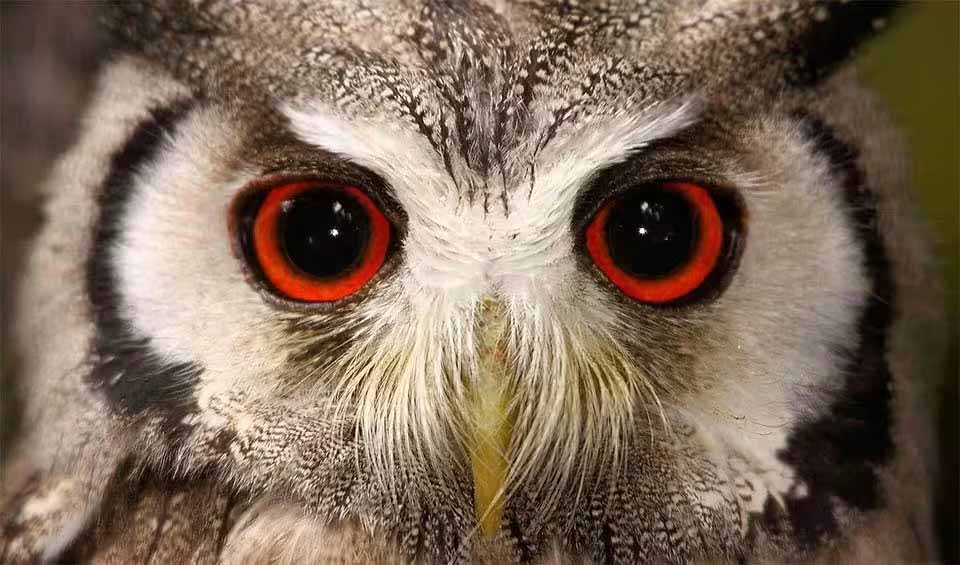Ptilopsis – White-faced owls
These owls hunt from a perch, dropping down on their unsuspecting prey
These owls are renowned for their distinctive white face with contrasting black outlines and large, bright orange eyes, which lend them a striking and somewhat otherworldly appearance.
These medium-sized owls possess a striking dark-grey plumage patterned with fine bars and spots, which provides excellent camouflage within their habitat. The presence of prominent ear tufts further adds to their distinctive look and aids in breaking up their silhouette among branches, aiding in camouflage.
In terms of habitat, Ptilopsis species are versatile and inhabit a variety of wooded environments across Africa. They can be found in savannas, forests, and even in suburban areas where trees are plentiful. Their diet is just as varied and includes a wide range of prey items, such as insects, which they hunt at night thanks to their exceptional nocturnal vision, as well as reptiles, small mammals, and occasionally other small birds.
The vocalizations of the two species differ notably. The Northern White-faced Owl‘s call is typically a quieter two-note hoot, which can vary in pitch, while the Southern White-faced Owl is known for its rapid staccato hooting. These calls are used to establish territories, attract mates, and communicate with one another.
Despite their small size, which makes them vulnerable to predation by larger raptors, White-faced Owls have developed remarkable behavioral adaptations for self-preservation. When confronted with a potential threat, these owls can perform a fascinating display of adaptive camouflage: they will compress their feathers and elongate their bodies to appear more like a branch or tree trunk, even closing their eyes to narrow their facial profile. Conversely, if faced with a smaller or less intimidating threat, they will puff up their feathers to make themselves look larger and more formidable.
Species in this genus
Northern white-faced owl
These owls are strictly nocturnal and generalist hunters, preying on moths, scorpions, birds, rodents, and everything in between


